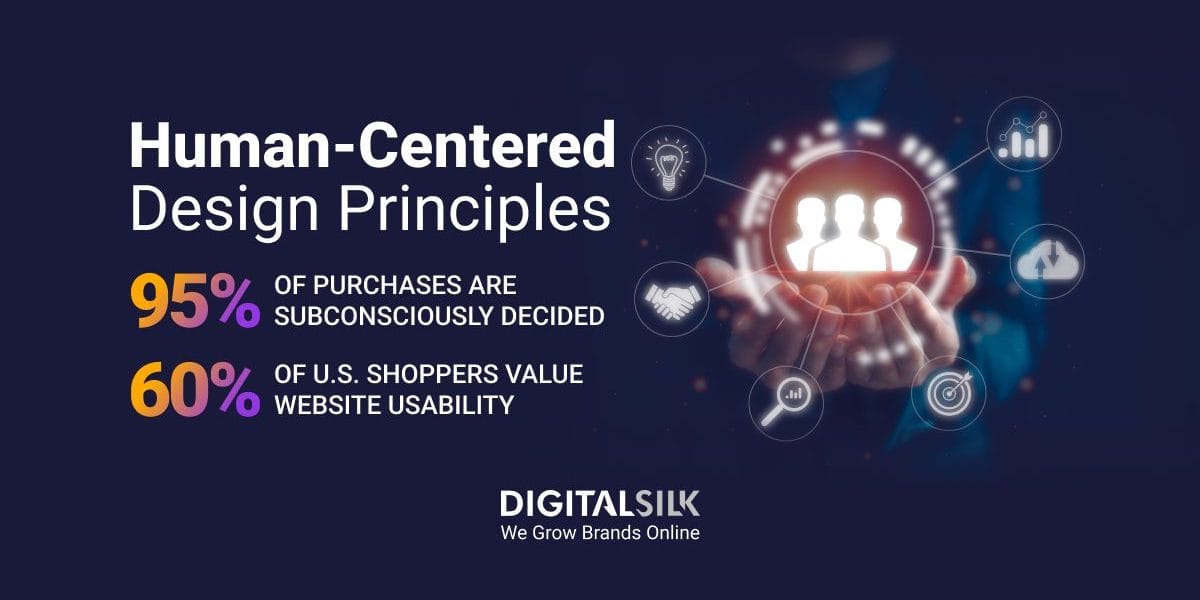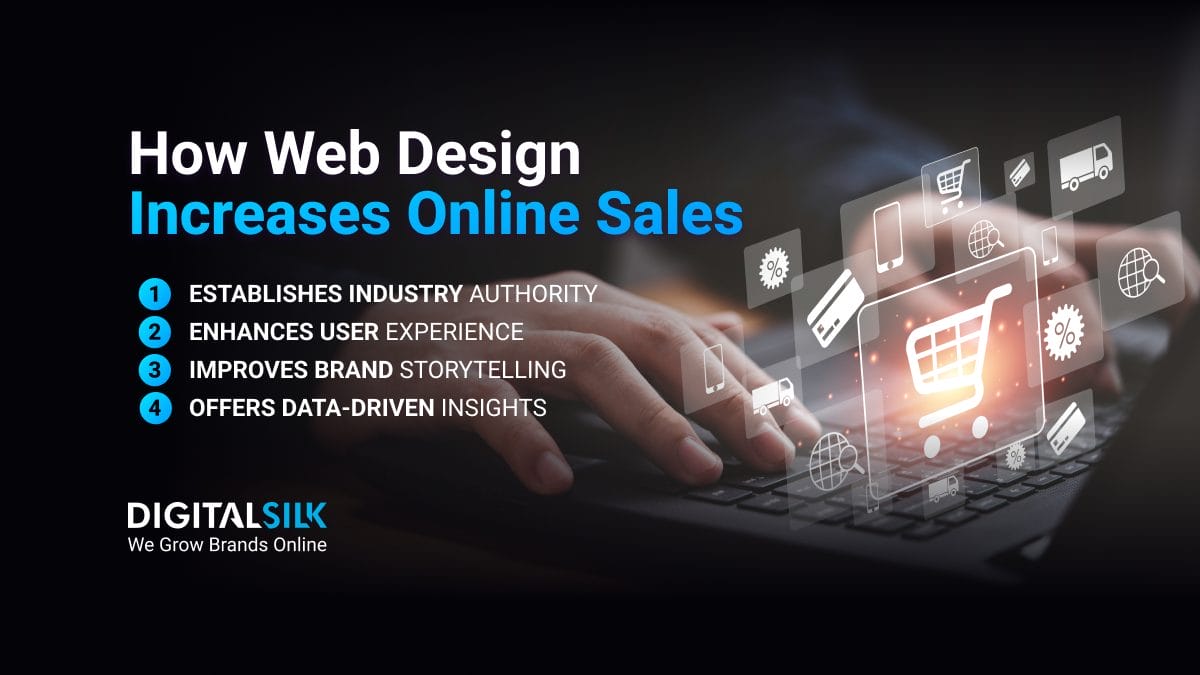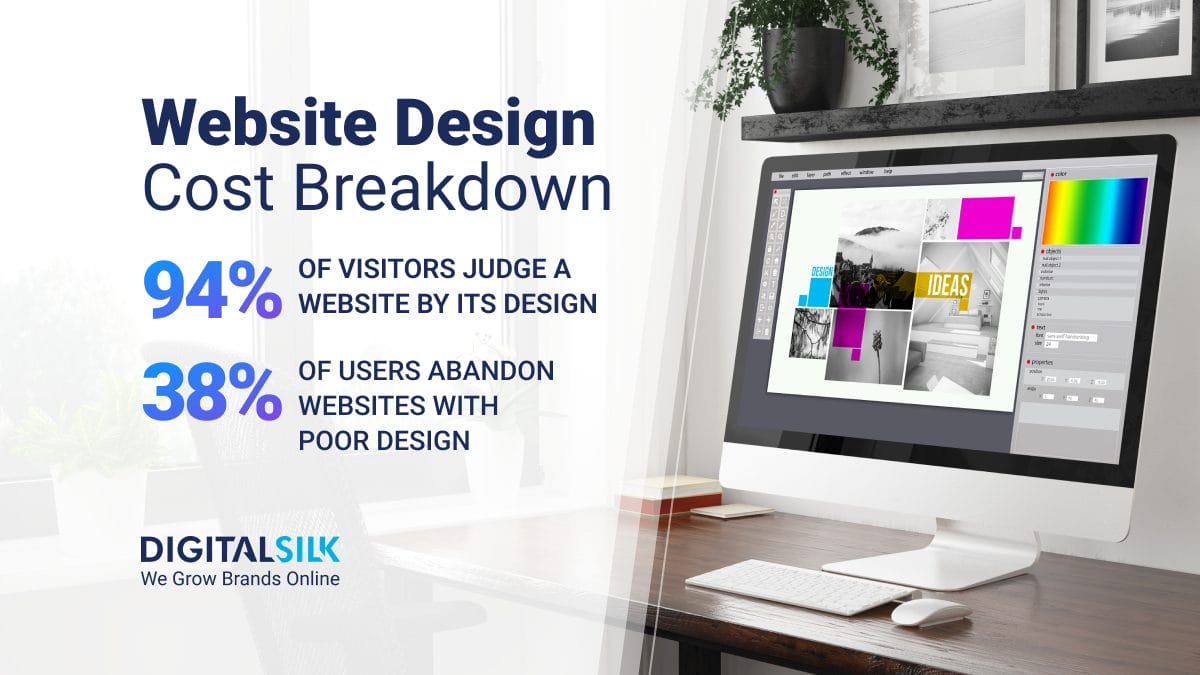95% of purchasing decisions are made subconsciously.
Regardless of the business you are in, choosing human-centered design (HCD) will make sure that your website or app is tailored to meet the unique needs and preferences of your users.
Below, we introduce the principles and processes to show how your business can make the most of HCD.
We also share examples of human-centered websites and applications that stand out as intuitive and efficient solutions, meet the demands of your users and lead to greater satisfaction and business success.
The Importance Of Human-Centered Design In Websites & Mobile Apps
Human-centered design (HCD) is a problem-solving approach that focuses on understanding and addressing the needs, desires and challenges of end-users.
As such, it’s crucial for digital solutions like websites and applications as it creates user-friendly, effective and engaging experiences that cater to the diverse needs of your bespoke target audience.
Incorporating HCD principles into website and app development is essential for achieving positive outcomes across various sectors. These outcomes can include:
We craft unique, on-brand designs. Request a Quote
1. Enhanced User Experience (UX)
HCD helps create websites with clear navigation, meaningful content and accessible features that prioritize the needs and preferences of users.
It achieves this by ensuring users can easily find information and complete tasks.
In fact, investing in UX can produce a $100, or 9,900%, Return on Investment for your business.
2. Increased User Engagement
HCD focuses on user needs and behaviors to craft engaging content and interactive elements like quizzes, personalized recommendations and user-generated content.
These elements keep users interested and encourage them to spend more time on the site.
One study by UXPin found the use of micro-interactions can improve visitor engagement by up to 30%.
3. Higher Conversion Rates
In addressing user pain points and providing a seamless journey — such as easy checkout processes and personalized product suggestions on an eCommerce website — HCD creates websites that guide visitors toward desired actions, resulting in higher conversion rates.
In fact, 60% of U.S. shoppers highlight usability as a key design characteristic for online stores.
4. Improved Accessibility
Accessibility standards sit at the core of HCD, as it ensures the needs of all users, including those with disabilities, are considered.
This is actioned through the implementation of inclusive design practices, such as alt text for images, keyboard navigation and high-contrast design elements.
Learn more about website accessibility in our explainer video below:
5. Competitive Advantage
Using a human-centered design approach helps to create a UX that aligns with the needs of your target audience.
This way, your website can stand out from less user-friendly competitors while attracting and retaining valuable visitors.
In fact, organizations that leverage customer behavioral insights outperform competitors in sales growth by 85%.
6. Improved SEO Performance
Your website’s usability is an important factor in its SEO performance.
HCD listens to the desires of your visitors, creating an intuitive UX that provides valuable sessions. Leading to a reduction in bounce rates, higher conversions and return visits, this can result in better search engine rankings and increased organic traffic.
7. Improved Efficiency
User feedback and iterative improvements are a crucial aspect of HCD. In turn, HCD helps to streamline the design process, reducing both the time and resources spent on redesigns and fixes by developing a high-performing website from the get-go.
We delivered a high-quality, streamlined website design for Repario Data, an eDiscovery solutions provider, in just eight weeks.
The new site includes seven unique landing pages that boost the site’s functionality by focusing on the wider UX for Repario’s website visitors.
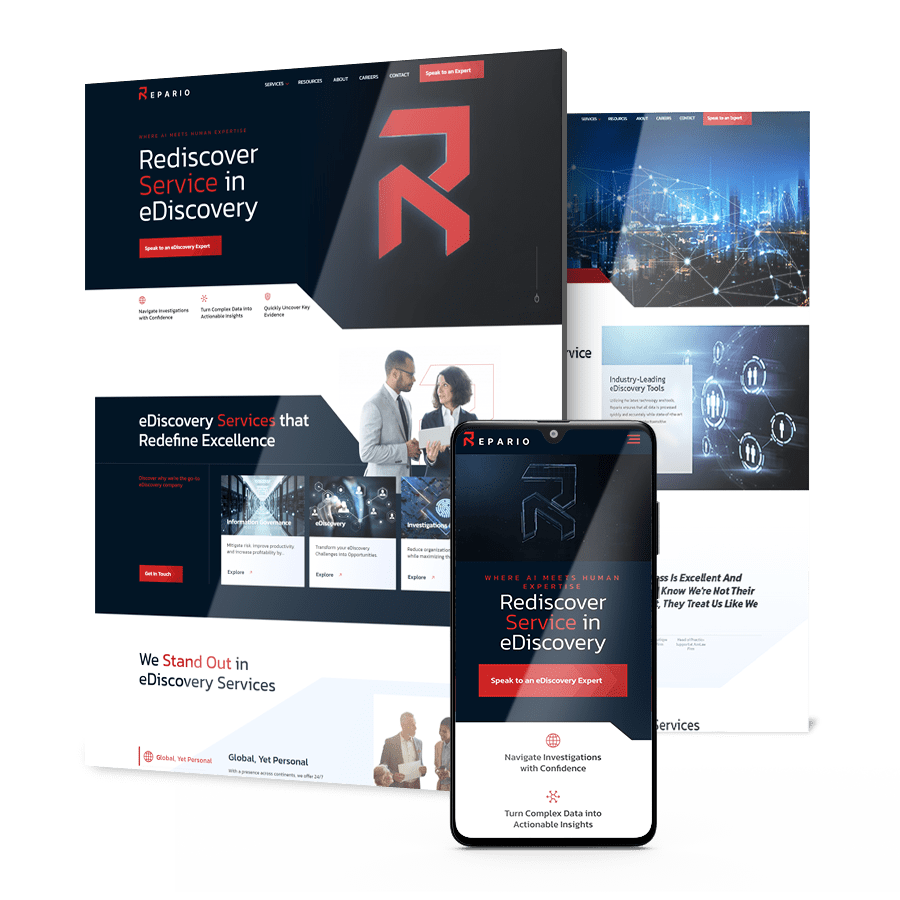
8. Better Brand Perception
A high-quality, user-friendly UX shaped by HCD is a key driver in creating positive experiences which lead to positive brand associations.
Better brand perceptions are central to your business’ performance online, as 90% of online shoppers have chosen not to buy from a company due to its bad reputation.
9. Enhanced Brand Loyalty
User-centric design and seamless interactions are an important factor in delivering positive experiences and fostering a connection between your brand and customers.
In turn, HCD helps to build increased brand loyalty and advocacy for your products, services and brand identity.
Human-Centered Design Examples: Websites & Mobile Apps
Prioritizing user needs and feedback can lead to highly intuitive, engaging and successful digital solutions. Let’s see how human-centered design thinking has been effectively applied in the development of various mobile apps and websites.
1. Airbnb
Designed with the user in mind, Airbnb’s website offers a seamless and intuitive experience for both hosts and guests.
The site has clear navigation, personalized recommendations and detailed listings with high-quality images and reviews.
Other user-centered features include easy search and filter options, interactive maps and a smooth booking process.
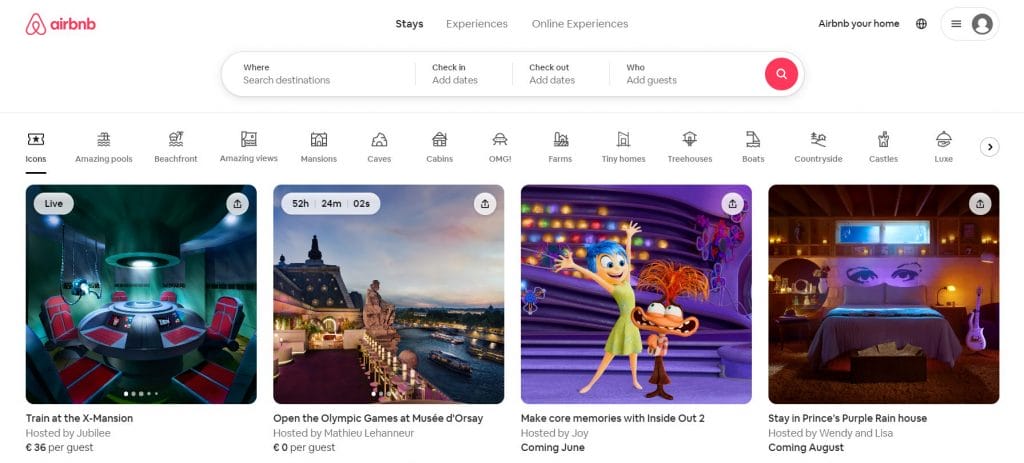
2. Apple
Apple’s website offers a clean, minimalist design that focuses on user experience. It highlights products using high-quality visuals and straightforward navigation, which makes it easy for users to find and learn about these products.
Additional user-centered features include intuitive product pages and a seamless checkout process.

3. Spotify
Spotify’s website is designed to enhance user engagement and make music discovery easy. It features personalized playlists, user-friendly navigation and an attractive, responsive design.
Other user-centered features include personalized recommendations and integration with mobile and desktop applications.
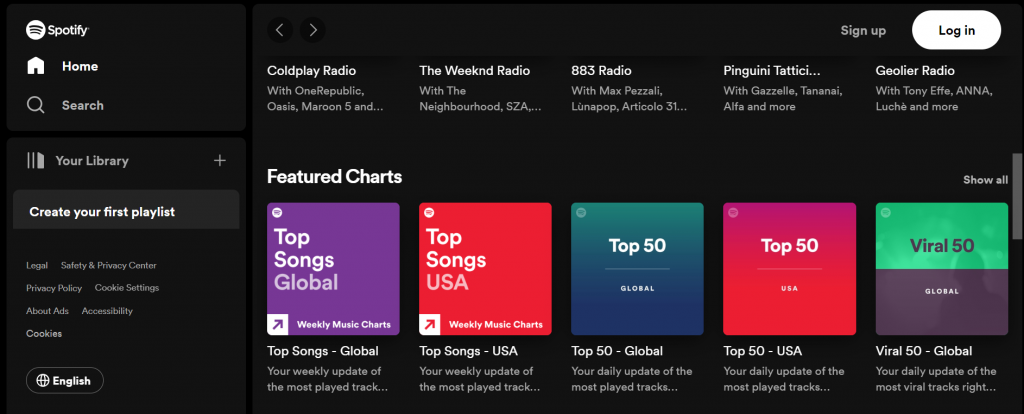
4. Uber
Uber’s app provides a seamless experience for both riders and drivers. It uses user-friendly navigation, real-time tracking and easy payment options.
Uber’s app features are optimized continuously based on user feedback to improve the overall experience.
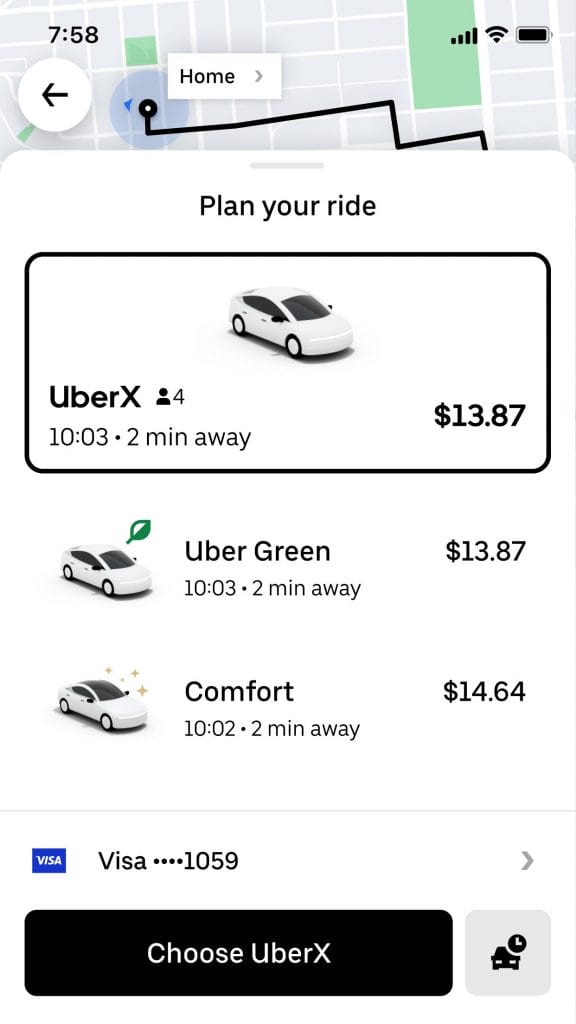
5. Duolingo
Duolingo, a language-learning app, offers gamified lessons that adapt to the user’s skill level.
Through continuous user feedback and testing, Duolingo has created an engaging and intuitive learning experience that caters to various learning styles.
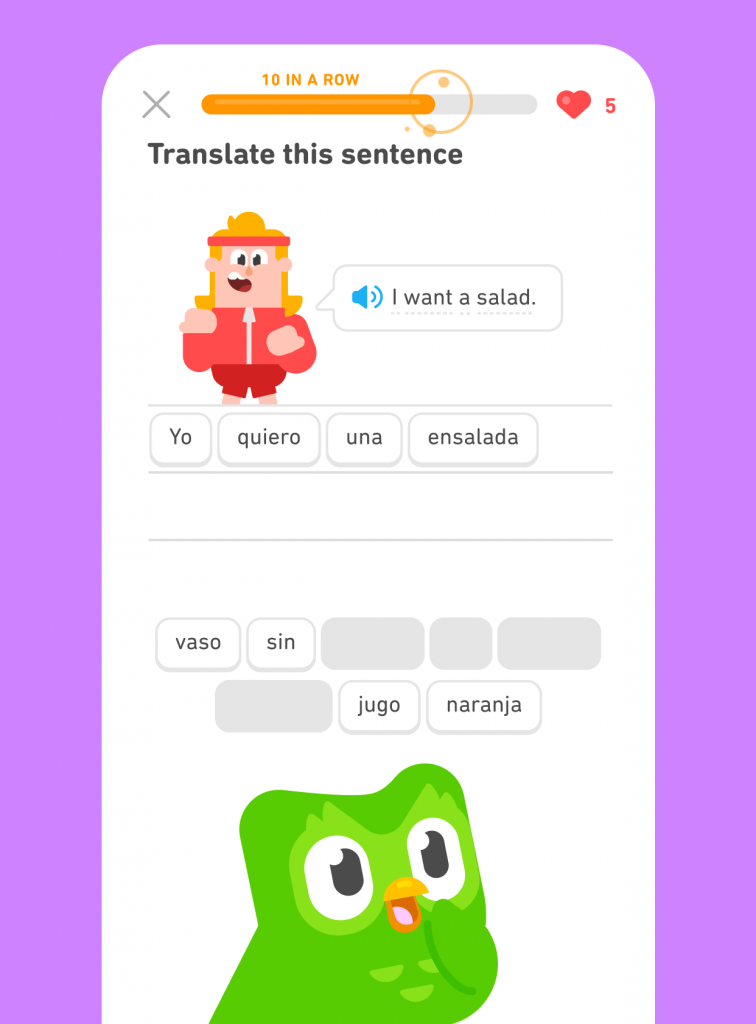
6. Nike Training Club
Nike Training Club, a popular fitness app, provides personalized workout plans and instructional videos.
Based on user feedback and data analytics, the app offers tailored recommendations, tracking features and motivational content to help users achieve their fitness goals.
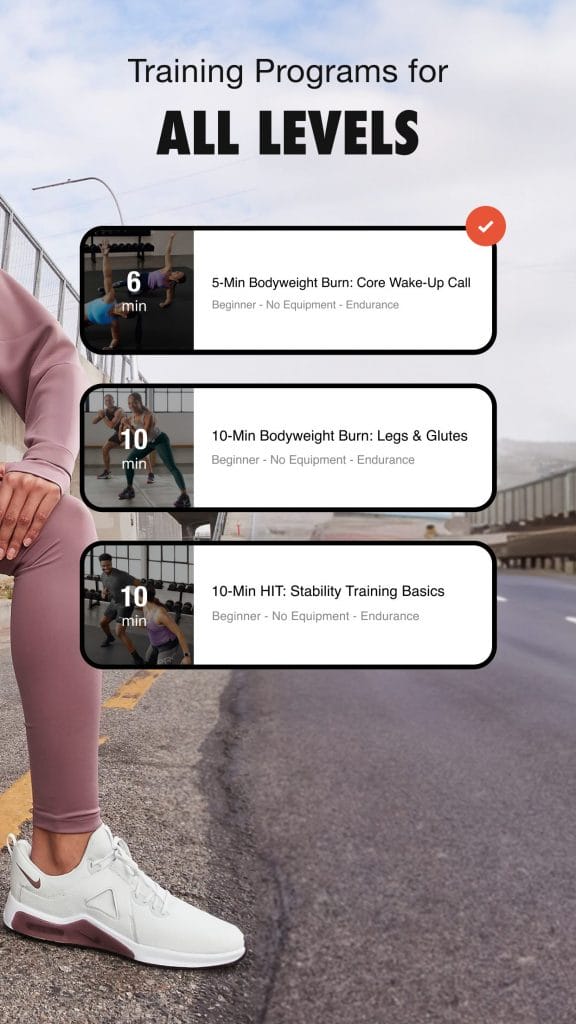
What Industries Can Benefit From Human-Centered Design?
No matter what your business specializes in or target audience demands, HCD allows you to shape valuable user experiences by leveraging the perspective of your visitors.
Some key industries that can benefit from using HCD in their digital presence include:
- Healthcare: HCD will improve patient engagement, facilitate communication between patients and healthcare providers and offer personalized recommendations tailored to each individual’s health goals, preferences and progress.
- Example: MyChart
- Outcome: Intuitive access to records, easy communication with providers, personalized health recommendations
- Education: HCD will facilitate effective teaching and learning experiences.
- Example: Khan Academy
- Outcome: Personalized learning dashboards, adaptive exercises, progress tracking
- eCommerce: HCD will optimize the user journey, increase conversions and enhance customer satisfaction and loyalty.
- Example: Amazon
- Outcome: Personalized recommendations, easy navigation, seamless checkout
- Finance and banking: HCD will simplify banking tasks, build trust and improve financial literacy.
- Example: Chime
- Outcome: Simple banking tasks, real-time notifications, automatic savings
- Travel and hospitality: HCD will create personalized experiences, streamline booking processes and enhance customer loyalty.
- Example: Booking.com
- Outcome: Personalized search results, easy booking, comprehensive reviews
- Government and public services: HCD will improve public engagement, transparency and efficiency in service delivery.
- Example: IRS
- Outcome: Clear navigation, accessible tax information, efficient e-filing
Human-Centered Design Principles
HCD principles are crucial in shaping user experiences in the digital world as they create a seamless and personalized experience that delights customers and drives conversions.
1. Problem-Solving
Problem-solving in HCD involves focusing on the right problem and exploring a wide range of possible solutions before narrowing it down to the most viable one.
For example, to redesign a company’s website, conduct detailed research to identify specific issues with the current site. To do that, use surveys to gather feedback directly from your users about their experiences and pain points, or online tools like Google Analytics to track website performance metrics such as page views, bounce rate and user behavior.
Depending on the insights received, you can identify problem areas and develop targeted solutions to improve user experience, whether it’s redesigning navigation menus, optimizing page load times or refining content layout and messaging.
2. Empathy
Empathy in HCD involves understanding your website visitors’ experiences, emotions and needs. To do that, designers need to immerse themselves in the users’ environment and view the world through their eyes.
For example, to create a mobile health app, conduct interviews with patients and healthcare providers to understand their daily routines, pain points and how they interact with existing health tools.
Organize shadowing sessions and spend time observing patients and healthcare providers in their daily routines, whether it’s during clinic visits, medication management or remote consultations.
Create empathy maps to visualize and understand users’ emotions, behaviors and challenges based on the insights gathered from interviews and observations.
3. Collaboration
Collaboration in HCD involves using different perspectives and expertise into the design process to look at the problem from various perspectives.
For example, to develop a fitness tracking app, research user fitness goals and challenges. Consult diverse experts, such as fitness experts and psychologists to make sure the app is made in a way to encourage users adopt healthier habits.
Hold brainstorming sessions where team members can generate ideas and concepts for the app’s features and functionalities.
4. Iteration
Iteration involves creating multiple versions of a prototype, testing them, gathering feedback and refining the design based on this feedback. This principle helps to improve the solution and ensure it meets user needs.
For example, to develop a new eCommerce website, conduct A/B testing to compare different design options or features and gather data on user behavior, preferences and conversion rates.
Refine your website or app prototypes based on user feedback and implement suggested improvements to enhance usability, functionality and overall user experience.
5. Flexibility And Consistency
Preparing for the future yet remaining consistent with your design is the key to staying relevant in a saturated market.
You should be prepared to make changes and adapt your design to new trends, technologies and user needs.
However, you need to maintain brand consistency in your design elements such as color schemes, typography and messaging.
This includes cross-device consistency, where the design remains consistent yet responsive across different platforms such as desktop, mobile and social media.
How To Implement Human-Centered Design In Your Web Design Process
We’ve broken down the process into several easy steps to help you create user-centered websites and apps that truly resonate with your audience.
1. Research Your Target Groups
Conducting comprehensive research is an important first step in HCD to gain insights into your target audience, including their needs, behaviors and pain points.
To do this, you can use:
- Quantitative data through analytics and surveys
- Qualitative insights through interviews, usability testing and user personas
Adopt a holistic approach when researching your target demographic by analyzing the broader system in which your products or services exist.
2. Include An Ideation Phase
Brainstorming ideas and concepts based on the outcome of your research helps to link the perceptions of your target audience to your unique project requirements.
Partner with cross-functional teams including UX/UI designers, developers and marketing experts to generate innovative solutions that address user needs and align with your business objectives.
3. Cultivate Empathy In Design
Prioritizing an understanding of users’ experiences and emotions is essential.
Conduct ethnographic research to observe users within their everyday environments, uncovering valuable insights into their behaviors, needs and challenges.
This approach allows for a deeper connection with users and informs more thoughtful, user-centered design decisions.
4. Take A Holistic Perspective
Consider the entire user journey and the broader ecosystem where the product operates.
This approach ensures that the solution integrates naturally into users’ lives, addressing their needs comprehensively and seamlessly.
5. Create A Prototype
Building a prototype, or wireframe, of your digital product helps to master a UX that drives value for your users, before visual elements are added to the mix.
Start by sketching out your ideas on a piece of paper. Make low-fidelity sketches to visualize how your website or app might look and function. Once you have a rough idea, you can use tools like Figma to turn your sketches into more detailed designs.
This lets you test different features and see how users interact with your product. Review prototypes with developers to ensure technical feasibility and make adjustments. Test prototypes with users, gather feedback and iterate on the design before moving forward.
6. Design And Develop
Design and development are where your HCD-oriented features can come to life.
Develop the final design based on the feedback received during the prototyping step. Implement user-friendly interfaces, clear navigation structures and engaging content.
Collaborate with developers to make sure your solutions are optimized for various devices and browsers.
7. Test And Evaluate
Conducting usability testing with real users allows you to evaluate whether your final product meets the expectations of your target audience.
Gather feedback on navigation, content clarity and overall user experience. Then, refine the final product based on user insights.
8. Launch And Optimize
HCD doesn’t stop when you hit publish.
Launch the website or digital marketing campaign and monitor its performance. Use analytics tools to monitor various key metrics, such as user engagement and conversion rates.
Optimize the design and content based on user reactions and data insights to improve performance over time.
We craft unique, on-brand designs. Request a Quote
Build A Human-Centered Website With Digital Silk
HCD significantly impacts web design by creating user-focused, intuitive and engaging experiences that meet users’ needs and preferences.
As a full-service agency, we leverage HCD principles to help you develop websites that not only attract but also retain and satisfy your target audiences.
At Digital Silk, we deliver a wide range of digital services, including custom web design, custom web development, eCommerce development and digital marketing, to deliver results that drive business success.
We are recognized for our commitment to every project from start to finish, maintaining transparency throughout the process and achieving measurable results that consistently exceed our clients’ expectations.
To kickstart your web design journey, contact our team, call us at (800) 206-9413 or fill out the Request a Quote form below.
Human-Centered Design FAQs
The key principles of human-centered design include empathy, collaboration, iteration and flexibility and consistency. Designers can use them to create solutions that address real user needs, target specific groups and optimize for conversions.
HCD focuses on understanding and addressing user needs, while traditional design approaches may prioritize aesthetics or functionality. HCD highlights the end-user’s perspective and focuses on collaborative and iterative problem-solving.
Consumers should feel heard and understood by the brands they interact with. Empathy can help you identify and proactively address user challenges, boost trust and credibility and feed the conversion funnel.
HCD uses a data and research-driven approach, including techniques such as user interviews, surveys, personas, empathy maps, wireframes, prototypes, usability testing and analytics. These methods help designers understand and empathize with their target audience, validate design decisions and identity growth opportunities.
Businesses can facilitate effective communication between healthcare providers and patients, offer easy access to medical records and appointment scheduling, offer personalized treatment recommendations and offer transparent pricing and billing processes.
HCD can be resource and time-intensive, requiring continuous research and testing to ensure the design meets user needs. It may also require a shift in mindset and processes for organizations used to traditional design approaches.
"*" indicates required fields


